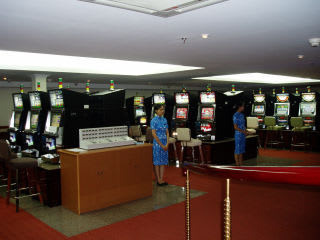#地名や個人名がでてくると弱いな。。。
サンスクリット記述(最も重要な文化的要素)は、古代のインド人記述からでした。サンスクリット文字に基づいて、それらは古いチャム記述(それは多くの段階を通って改善された)を作成しました。したがって、数人が今それを読むことができます。インドの宗教および文学中のいくつかの古典的例はチャム伝説の中で繰り返されました。チャム・アーキテクチャーおよび彫刻はヒンズー教芸術によって影響を受けました、そしてどれ(いくつかの東南アジアの国々の)。チャムは選択的にインドの芸術を受け取り、自分のスタイルでそれを表現しました。ヒンズー教の中の3人の主な神では、チャムはシヴァ神に大部分を激賞しました。それは、あった東南アジアの国々のどこにもそれほど言うことができません、多くの大きなサイズおよびChampaの王国でのような美しいリンガ祭壇。
チャム寺院タワーはインド、カンボジアおよびインドネシアでもののようにそれほど巨大でなく奇怪ではありません、しかしそれほど威厳がないその上、チャム・アーキテクチャーはその区別(丘の上にチャムタワーを作った)を持っており、光景からそれらをまわりに有名にしました。
音楽とダンスは、フェスティバル、結婚および葬式上のコミュニティーの習慣と同様に帝国の活動およびヒンズー教の儀式の要求から強く開発されていました。
結婚の習慣は今まで維持されました。女性は、結婚における活発な役割をとり、夫は重要な作品を担当しましたが、家族の中の上司と見なされました。
チャム葬式に関して、中国の記録は、死者がしばしば燃やされたと言いました、それらの灰は小さなつぼに入れられましたチャムキングの遺物は金のつぼに入れられ、海に投げ込まれました。有力者の残りは銀のつぼに入れられ川に投げ込まれました。また、民間人の灰は埋められて、陶器の�ツぼに次に入れられました。
現在では、以下のように分割されたグループの110,000人以上のチャム住民がいます:72,000人以上は、それらのNinh ThuanおよびBinh Thuan 60パーセントの中に40パーセントバラモンです、Banistsです。An Giangの中の13,000人のイスラム教徒。Dong NaiおよびTay Ninhの中の3,000以上.ホーチミンの都市のほぼ4,000人のイスラム教徒。ビンディンの山岳地方の約18,000、チャム・コミュニティーから分けられて、チャム-Horoiと呼ばれるPhu Yen、それらはM'nongのような山地の少数民族に接近して生きています、Bahnar、したがって、それらの文化的・経済的活動は平原のチャムとは異なります。
その上、ベトナム人と一緒に生きているとき、多くのチャムは集められました。それらは、徐々に多くの世代の言語および習慣を受理しました。Tra、Che、Ongなどのようなチャム姓があって、彼らはベトナム語で話し、Khanh HoaやQuang Binhでベトナム人として生きています。Quang Namは以前Champaの王国の小さな州アマラーヴァティーでした、どの中で、そのような有名な遺物、として、タワーのMy Son 聖地、主都Tra Kieu、Dong Duong仏教徒僧院およびグループが構築されました。今まで、それらの多くは自然な風化および戦争によって被害を受けました。しかし、いくらかは時間によってまだ残っていました。
この項終わり
Writing - the most important cultural element - was from sanskrit, an ancient Indian writing. Based on Sanskrit letters, they created old Cham writing, which was improved through many stages, so a few people can read it now. Some classical examples in Indian religions and literature were repeated in Cham legends.
Cham architecture and sculpture were influenced by Hinduist art and which of some Southeast Asian countries. The Cham selectively received Indian art and expressed it in their own style. In the three major Gods in hinduism, the Chams extolled Shiva the most. It can be said that nowhere in Southeast Asian countries there were many big size and beautiful Linga altars as in the Kingdom of Champa.
Cham temple-towers are not so huge and grotesque as the ones in India, Cambodia and Indonesia, but not less majestic; besides, Cham architecture has its owns distinction, the Cham also built towers on hill and made them distinguish themselves from the sight around.
Music and dancing were strongly developed from the demand of imperial activities and Hinduist rituals as well as the custom of community on festivals, marriages and funerals.
Custom of marriage has been kept until now. Women took an active role in marriage and were regarded as the boss in the family although husbands took charge of important work.
About Cham funeral, Chinese records said that the dead was often burnt, their ashes were put in a small urn. A King's relics were put in a gold urn and thrown into the sea. Mandarin's remains were put in a silver urn and thrown into the river, and civilian's ashes were put in a ceramic urn then buried.
At the present, there are over 110,000 Cham inhabitants of carious groups, divided as follows : over 72,000 in Ninh Thuan and Binh Thuan 60 percent of them are Brahmin, 40 percent are Banists. 13,000 Muslims in An Giang. Over 3,000 in Dong Nai and Tay Ninh. Nearly 4,000 Muslims in Ho Chi Minh city. About 18,000 in mountainous area in Binh Dinh, Phu Yen called Cham-Horoi, separated from Cham community, they live close to mountainous ethnic minorities, such as the M'nong, the Bahnar so their cultural and economical activities are different from the Cam in plain.
Besides, a large number of the Chams were localized when living together with Vietnamese. They gradually accepted language and custom in many generations. Having such Cham surnames as Tra, Che, Ong, etc, they speak Vietnamese and live as the Vietnamese from Quang Binh to Khanh Hoa.
Quang Nam was once the minor state Amaravati of the Kingdom of Champa, in which such famous relics as the My Son sanctuary, the capital Tra Kieu, Dong Duong Buddhist monastery and groups of tower were built. Until now, a lot of them were damaged by natural desasters and wars, but some were still stable through time.
サンスクリット記述(最も重要な文化的要素)は、古代のインド人記述からでした。サンスクリット文字に基づいて、それらは古いチャム記述(それは多くの段階を通って改善された)を作成しました。したがって、数人が今それを読むことができます。インドの宗教および文学中のいくつかの古典的例はチャム伝説の中で繰り返されました。チャム・アーキテクチャーおよび彫刻はヒンズー教芸術によって影響を受けました、そしてどれ(いくつかの東南アジアの国々の)。チャムは選択的にインドの芸術を受け取り、自分のスタイルでそれを表現しました。ヒンズー教の中の3人の主な神では、チャムはシヴァ神に大部分を激賞しました。それは、あった東南アジアの国々のどこにもそれほど言うことができません、多くの大きなサイズおよびChampaの王国でのような美しいリンガ祭壇。
チャム寺院タワーはインド、カンボジアおよびインドネシアでもののようにそれほど巨大でなく奇怪ではありません、しかしそれほど威厳がないその上、チャム・アーキテクチャーはその区別(丘の上にチャムタワーを作った)を持っており、光景からそれらをまわりに有名にしました。
音楽とダンスは、フェスティバル、結婚および葬式上のコミュニティーの習慣と同様に帝国の活動およびヒンズー教の儀式の要求から強く開発されていました。
結婚の習慣は今まで維持されました。女性は、結婚における活発な役割をとり、夫は重要な作品を担当しましたが、家族の中の上司と見なされました。
チャム葬式に関して、中国の記録は、死者がしばしば燃やされたと言いました、それらの灰は小さなつぼに入れられましたチャムキングの遺物は金のつぼに入れられ、海に投げ込まれました。有力者の残りは銀のつぼに入れられ川に投げ込まれました。また、民間人の灰は埋められて、陶器の�ツぼに次に入れられました。
現在では、以下のように分割されたグループの110,000人以上のチャム住民がいます:72,000人以上は、それらのNinh ThuanおよびBinh Thuan 60パーセントの中に40パーセントバラモンです、Banistsです。An Giangの中の13,000人のイスラム教徒。Dong NaiおよびTay Ninhの中の3,000以上.ホーチミンの都市のほぼ4,000人のイスラム教徒。ビンディンの山岳地方の約18,000、チャム・コミュニティーから分けられて、チャム-Horoiと呼ばれるPhu Yen、それらはM'nongのような山地の少数民族に接近して生きています、Bahnar、したがって、それらの文化的・経済的活動は平原のチャムとは異なります。
その上、ベトナム人と一緒に生きているとき、多くのチャムは集められました。それらは、徐々に多くの世代の言語および習慣を受理しました。Tra、Che、Ongなどのようなチャム姓があって、彼らはベトナム語で話し、Khanh HoaやQuang Binhでベトナム人として生きています。Quang Namは以前Champaの王国の小さな州アマラーヴァティーでした、どの中で、そのような有名な遺物、として、タワーのMy Son 聖地、主都Tra Kieu、Dong Duong仏教徒僧院およびグループが構築されました。今まで、それらの多くは自然な風化および戦争によって被害を受けました。しかし、いくらかは時間によってまだ残っていました。
この項終わり
Writing - the most important cultural element - was from sanskrit, an ancient Indian writing. Based on Sanskrit letters, they created old Cham writing, which was improved through many stages, so a few people can read it now. Some classical examples in Indian religions and literature were repeated in Cham legends.
Cham architecture and sculpture were influenced by Hinduist art and which of some Southeast Asian countries. The Cham selectively received Indian art and expressed it in their own style. In the three major Gods in hinduism, the Chams extolled Shiva the most. It can be said that nowhere in Southeast Asian countries there were many big size and beautiful Linga altars as in the Kingdom of Champa.
Cham temple-towers are not so huge and grotesque as the ones in India, Cambodia and Indonesia, but not less majestic; besides, Cham architecture has its owns distinction, the Cham also built towers on hill and made them distinguish themselves from the sight around.
Music and dancing were strongly developed from the demand of imperial activities and Hinduist rituals as well as the custom of community on festivals, marriages and funerals.
Custom of marriage has been kept until now. Women took an active role in marriage and were regarded as the boss in the family although husbands took charge of important work.
About Cham funeral, Chinese records said that the dead was often burnt, their ashes were put in a small urn. A King's relics were put in a gold urn and thrown into the sea. Mandarin's remains were put in a silver urn and thrown into the river, and civilian's ashes were put in a ceramic urn then buried.
At the present, there are over 110,000 Cham inhabitants of carious groups, divided as follows : over 72,000 in Ninh Thuan and Binh Thuan 60 percent of them are Brahmin, 40 percent are Banists. 13,000 Muslims in An Giang. Over 3,000 in Dong Nai and Tay Ninh. Nearly 4,000 Muslims in Ho Chi Minh city. About 18,000 in mountainous area in Binh Dinh, Phu Yen called Cham-Horoi, separated from Cham community, they live close to mountainous ethnic minorities, such as the M'nong, the Bahnar so their cultural and economical activities are different from the Cam in plain.
Besides, a large number of the Chams were localized when living together with Vietnamese. They gradually accepted language and custom in many generations. Having such Cham surnames as Tra, Che, Ong, etc, they speak Vietnamese and live as the Vietnamese from Quang Binh to Khanh Hoa.
Quang Nam was once the minor state Amaravati of the Kingdom of Champa, in which such famous relics as the My Son sanctuary, the capital Tra Kieu, Dong Duong Buddhist monastery and groups of tower were built. Until now, a lot of them were damaged by natural desasters and wars, but some were still stable through time.


















